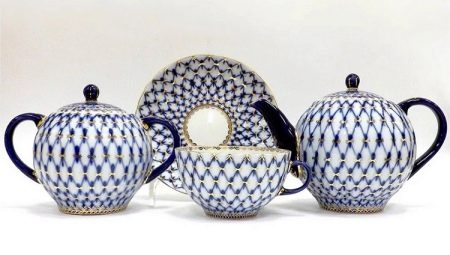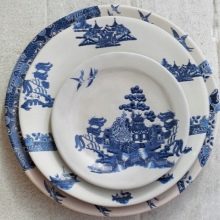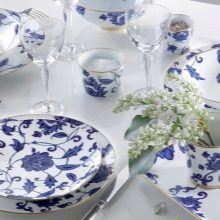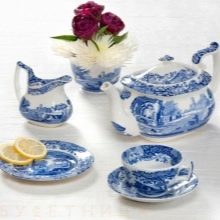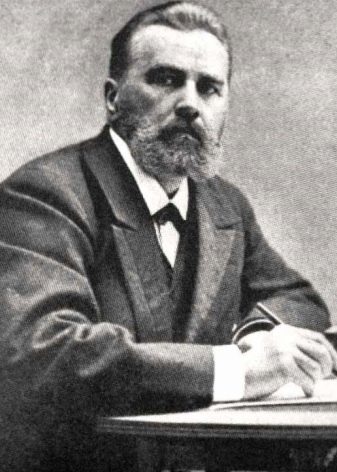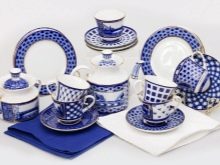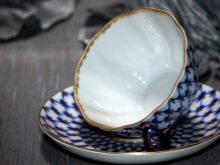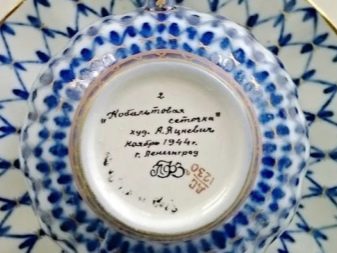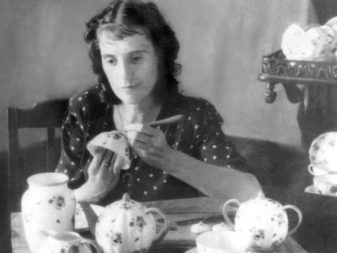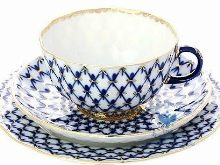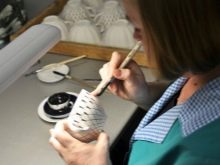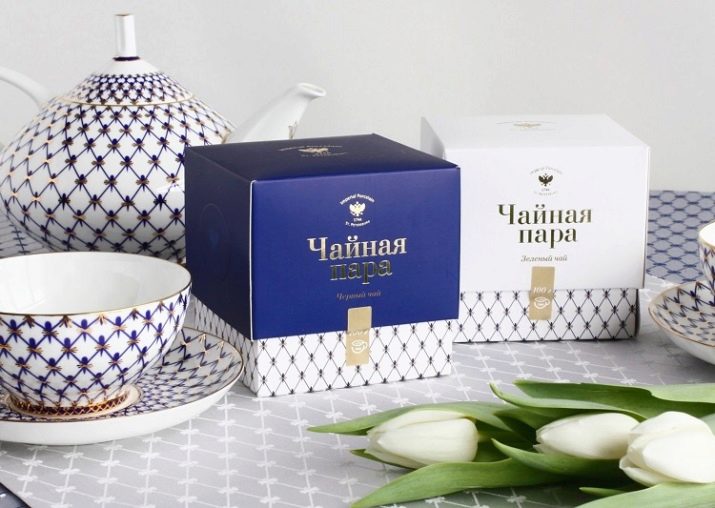Cobalt dishes are tea sets, individual cups, plates, dishes and even figurines of high quality porcelain. A distinctive feature of this kitchen utensil is considered to be the characteristic dark blue coating with cobalt paint and gold painting, which is unique to it. The very dishes and patterns applied to it, their origin go into the distant past.
Metal, isolated from cobalt minerals, formed the basis of paint for painting dishes. It happened in the XVIII century. The Chinese first tried to use cobalt in the manufacture of porcelain. It is the dark blue color and its shades give the objects volume and special depth. The experience of the Chinese was immediately adopted by many European countries, including Russia.
Cobalt Cookware Manufacturers
The Imperial Porcelain Factory was built during the reign of Queen Elizabeth I in 1744. This enterprise is one of the largest manufacturers of porcelain products not only in Russia, but also in Europe. After 152 years of his work - after the change of power - he was renamed the State Porcelain Factory. After another 8 years, he became known as LFZ - Leningrad or Lomonosov Porcelain Factory. This continued until 2005. Then he returned the original name, he again became the Imperial.
Novgorod was also famous for pottery and glass production. In the province successfully operated 6 plants. All these successful enterprises belonged to merchant Kuznetsov Ivan Yemelyanovich, and later to his descendants. The Bronnitskaya factory worked with the highest productivity, which after 1921 became known as the Proletary plant.
During World War II, the plant was evacuated, and after it resumed production.
In 1966, the company updated the equipment and became known as the “Renaissance” plant. His dishes were famous for their quality and uniqueness of patterns, while the products were completely covered with cobalt with gold painting. It was painted by hand only by students of the Mukhinsky School from St. Petersburg. Sketches of models created by them. Clay for porcelain products was delivered from Ukraine, gold for painting - from the Moscow region. Several types of products were cast from blue porcelain:
- tea sets;
- dishes of various shapes and configurations;
- figurines;
- Souvenirs in the form of local attractions.
The origin of the famous pattern
The “cobalt mesh” is deservedly considered to be the visiting card of Russian porcelain (more precisely, LFZ). For the first time the pattern was invented and painted on a tea set by artist Anna Yatskevich. It happened in 1944, when the blockade of Leningrad was just lifted.
The creation of the pattern was inspired by Anna experienced sad events: the light of anti-aircraft searchlights, reflected in the windows stuck with crosses, the death of loved ones experienced. It was in this drawing that the artist put the hope for a happy future. Belief in the fact that people will never see the searchlights dissecting the sky, so that, while admiring this pattern, they remember the price of the Victory. A blue cobalt grid on a white background gives expressiveness gold painting.
The first tea set with gold leaf, painted by the famous cobalt mesh, has the name "Tulip". At first, this pattern did not receive universal acceptance. He gained popularity after 1958.It was then that at the World Exhibition in Brussels LFZ was awarded the gold medal for the service, decorated with a grid of cobalt. The company logo of the plant was also developed by Anna Yatskevich, it is still used today.
Manufacturing process
The color of cobalt patterns depends on the thickness of the paint layer - the thicker it is, the darker is the stroke. According to some reports, the Chinese were able to identify 7 shades of cobalt, and there are only 4 of them on Russian-made vessels. The difficulty lies in the fact that it is impossible to see the color of the product before firing. When applied, the paint is a dark gray shade, and becomes blue only after two firing sessions. therefore Matching the color scheme of the finished product with a sketch of the artist depends entirely on the experience and professionalism of the master..
Cobalt pattern is applied on dishes in an underglaze manner. Then the product is subjected to firing at a temperature of 850 ºС. After that, the surface is covered with special glaze and the firing process is repeated, but already at a higher temperature - about 1350 ºС. The final stage is the application of overglaze painting, and this is done most often in gold or silver.
Care features
Dark blue cobalt in combination with gold against the background of white translucent porcelain is a win-win combination and a hostess’s pride. The presence of textured edging gives a special refinement to the dishes. To make products as long as possible the subject of admiration of guests, you need to follow some simple rules for their care.
- Wash such dishes should be done manually, without the use of aggressive chemicals and abrasive products.
- If, however, still use a dishwasher, then only in careful mode and at a minimum temperature.
- Use in the microwave is strictly prohibited.
For brewing tea, of course, you can choose any dishes - the taste of the drink will not change. But an elegant set with cobalt painting and gilding is able to create a miracle.
He will turn the usual tea in the refined meal, add to this process solemnity and elegance.
For information on how chinaware is made with the famous "Cobalt net" decor, see the following video from the Imperial Porcelain Factory.
